- News
- Reviews
- Bikes
- Accessories
- Accessories - misc
- Computer mounts
- Bags
- Bar ends
- Bike bags & cases
- Bottle cages
- Bottles
- Cameras
- Car racks
- Child seats
- Computers
- Glasses
- GPS units
- Helmets
- Lights - front
- Lights - rear
- Lights - sets
- Locks
- Mirrors
- Mudguards
- Racks
- Pumps & CO2 inflators
- Puncture kits
- Reflectives
- Smart watches
- Stands and racks
- Trailers
- Clothing
- Components
- Bar tape & grips
- Bottom brackets
- Brake & gear cables
- Brake & STI levers
- Brake pads & spares
- Brakes
- Cassettes & freewheels
- Chains
- Chainsets & chainrings
- Derailleurs - front
- Derailleurs - rear
- Forks
- Gear levers & shifters
- Groupsets
- Handlebars & extensions
- Headsets
- Hubs
- Inner tubes
- Pedals
- Quick releases & skewers
- Saddles
- Seatposts
- Stems
- Wheels
- Tyres
- Health, fitness and nutrition
- Tools and workshop
- Miscellaneous
- Buyers Guides
- Features
- Forum
- Recommends
- Podcast
Keep bike fit over winter! Turbo trainer set-ups for all budgets

This article includes paid promotion on behalf of Tacx
There’s an old truism in cycling, which goes something along the lines of: your performance in summer is the result of your training in the winter. While you may have no big goals on the immediate horizon at the moment, every mile you put in your legs now will have an effect when the season reaches its sharp end.
You don’t even need to be a racer for this to be relevant. Whether you’ve got some cycling challenges lined up for later in the year, or you just want to make the most of the good weather when it finally does come, now is the time to lay the groundwork.
Of course, that’s all very good in theory, but it’s wet, windy, cold, dark and dismal out there – who really wants to spend significant time in the saddle when faced with those conditions? Well, road riding isn’t the only option: right now we are in the season of the turbo trainer.
By setting up a home training option, you can get serious mileage in without battling the weather. In fact, indoor bike training has a lot going for it: you can carry on using your normal bike, so there’ll be no issues about unfamiliarity, poor bike fit or bad habits; you can schedule it into your lifestyle exactly when you want; and because turbo training is so predictable, you can really focus on following some structured training programmes that might otherwise by hampered by road conditions.
But where should you start looking for a turbo trainer? Tacx makes a huge range of indoor trainers that are suitable for all budgets. In this article and the accompanying video, we look at five different turbo-training set-ups, from entry-level all the way up to money-no-object. So, in the words Brum metallers and devoted static cycling enthusiasts (we presume) Judas Priest, it’s time to become a turbo lover.
Less than £250
Tacx Boost Bundle £249.99
For aspiring turbo users who are dipping a first toe into the world of indoor cycling, the Tacx Boost Bundle is an ideal starter set-up, coming with both the Boost trainer and a Garmin speed sensor.
The Boost trainer is quiet and features a 1.6kg flywheel for a good road feel. It’s also got a bar-mounted lever that lets you adjust resistance as you pedal; maximum resistance is more than a thousand watts, so that’s plenty to be getting on with. There’s even a front wheel riser included to keep your bike sitting level, and the Boost can fold up nice ‘n’ compact for easy storing.
However, it’s the Garmin speed sensor and its ability to be paired with any one of a range of compatible apps that really makes this a static cycling tour de force. All you need is a smart device and by using the speed from your rear wheel, the apps – we used Tacx’s own Training App – can then estimate your power output. And with that knowledge, you can really start developing your cycling.
Jamie says: “The Tacx Boost trainer provides a really great feel. There’s no slip of rear tyre on rear roller, unlike trainers of old, and the power reading I’m getting from the virtual app looks to be very accurate.”
Less than £500
Tacx Flow Smart £299.99 / Gym fan £35 / iPad stand £20 = Total £354.99
Thanks to the Garmin speed sensor, the Tacx Boost offers some ‘smart trainer’ functionality, but it’s very much an entry-level option. For your first taste of a true smart trainer you need to move up to the Tacx Flow Smart.
The functionality here makes connected apps way more useful because the Tacx Flow Smart can communicate via the ANT+ protocol or by Bluetooth to not only provide data but actually alter the resistance of the trainer itself. That means your pedalling experience will get tougher when the road is supposed to be going uphill, making for a far more realistic riding experience.
The Tacx Flow Smart can replicate gradients of up to 6% and it’s got a maximum resistance of 800 Watts. So with the Tacx Training App we used here, it’s possible to load training films of famous climbs, and then experience the changes in gradient along the way. Add in a suitably powerful fan as we did here – which is something of a necessity to keep you cool while training – and you can even imagine it’s an Alpine breeze to go along with that Alpine climb.
Jamie says: “The Tacx Flow Training programme is reliably able to keep me at my training wattage, no matter the cadence, by altering the resistance I face. The ride experience feels improved compared to the Boost – it’s really responsive and when I put in a bigger effort I can feel my power really translating to the virtual road. It’s also so quiet that you can have a chat whilst riding – assuming you have the spare capacity to chat!”
Less than £750
Tacx Flux S £599.99 / Tacx Trainer Mat £59.99 / Tacx Sweat Cover £21.99 / Fan £35 / iPad stand £20 = Total £736.97
Both turbo-trainers we’ve looked at so far have been ‘wheel-on’ models – that is to say, the rear wheel of your bike rests on a roller. But with the Tacx Flux S we step up in technology to a direct drive trainer, which means you remove the rear wheel of your bike and fit the chain round the trainer’s own cassette.
The advantages of direct drive turbo-trainers is they are much quieter than wheel-on options, and you also don’t wear out your rear tyre. But probably the real reason why direct drive trainers are favoured by serious cyclists is that they can measure your power far more accurately. In fact, with the Flux S you can measure your output to 3% accuracy. And when it comes to putting out big power, the Tacx Flux S boasts a maximum resistance of 1,500 watts and can replicate slopes up to 10%.
All this means you’re going to work hard, so to protect everything from sweat we’ve also suggested using Tacx’s Sweat Cover to look after your bike, and the Tacx Trainer Mat to look after your flooring.
Jamie says: “This is a significant step up, even just from a noise perspective – this is the quietest trainer we’ve had so far. This trainer is good for probably everything apart from elite level racing.”
Less than £1,000
Tacx Flux 2 £699.99 / Tacx Smartphone Sweat Cover £25.99 / Tacx Tablet Stand £149.99 / Tacx Trainer Mat £59.99 / Fan £35 = Total £970.96
As we head up towards the £1,000 mark, we’re starting to look at some very serious bits of indoor cycling kit. The Tacx Flux 2 has all the features to make it just about perfect for the vast majority of rides: it boasts a maximum resistance of 2,000 watts; it can simulate gradients of up to 16%; and it will measure your power output to within 2.5%. Thanks to a silky smooth 7.6kg flywheel, the ride experience is proper plush, too.
If you’ve got a full £1k to spend, you’ll have a bit of the budget remaining after buying the Flux 2, so we’ve suggested pairing it with Tacx’s specific Tablet Stand, which is nice and sturdy and puts your screen exactly where you want it. And you can literally splash out on (see what we did there?) Tacx’s own Smartphone Sweat Cover, to keep connected without wetness worries.
Jamie says: “With that bigger flywheel it does feel like a more realistic riding experience because, when you get to a little descent on your programme, the flywheel keeps spinning, and when you want to pedal again, it picks up quite quick. Also, having the tablet so close, makes it feels like you have a bigger display.”
Less than £2,000
Tacx NEO 2T £1,199.99 / Tacx Smartphone Sweat Cover £25.99 / Tacx Trainer Mat £59.99 / Vacmaster Fan £100 / 40in TV £300 / Laptop stand £20 = Total £1,705.97
Now we hit the big time with a seriously pro-level set-up. The Tacx NEO 2T is a supremely powerful direct drive smart trainer that is capable of powerful resistance at low speeds. It can simulate tough climbs – up to a 25% gradient – and will allow you to jump onto attacks without system lag. The NEO 2T also offers up to 2,200W of resistance at an accuracy of 1% via its 125kg ‘virtual’ flywheel, which can directly drive the rear wheel, so it'll even keep up speed when you're resting on descents.
Unlike competitors such as the Wahoo KICKR and the Saris H3, the Tacx NEO 2T doesn't use a belt to drive the resistance unit from the cassette: instead, the connection is direct. That makes it smart enough to be able to replicate different road surfaces, which you can feel if you're running Zwift or the Tacx app.
We teamed the NEO 2T with a 40in telly for a completely immersive experience, but because it can generate its own power, you could use the NEO 2T fully interactively with your favourite training app without even plugging it in, wherever you are. We also upgraded to a Vacmaster training fan which produces a lot of air and comes with a remote control so you can ramp it up when the going gets tough.
Jamie says: “The fact that the NEO 2T drives on descents in something that not many other trainers do. That means, when you get to the bottom of the climb, you don’t need to spin up that flywheel again, because it’s still moving – that’s a big advantage in races. The other cool thing is the NEO 2T has lights that react to your power output. If that doesn’t make you want to work harder, I don’t know what will!”
Money no object
Tacx NEO Bike Plus £3,499.99 / 65in TV £600 / Laptop stand £20 / Mat £65 / Fan £100 = Total £4,284.99
Finally, the true ultimate indoor cycling trainer set-up: the Tacx NEO Bike Plus. Now, don’t look at that price and think that’s a lot for just one person’s turbo-trainer; thanks to the NEO Bike Plus’s ease of adjustment, it’s quick and simple to get set up for a whole host of different riders. You even get five different crank lengths to choose from. Which means you can get it to perfectly match your race bike, but your race bike won’t end up covered in sweat!
At the heart of the NEO Bike Plus is the same resistance unit found in the NEO 2T trainer with all the same ride features. It also has a virtual gearing system that feels just like a real drivetrain, and you can configure it however you like, whether to replicate a Shimano, SRAM or Campag set-up, or even design one of your own.
There’s an in-built screen at front that provides gear information and ride metrics – if you’re working on your pedalling technique you can use the Tacx app to analyse a whole load of pedalling dynamics – and there are two USB ports to charge your relevant devices. The NEO Bike Plus also two inbuilt fans of its own, which can be set to blow harder for some useful extra cooling as your heart rate or power increases.
Jamie says: “I like this a lot. Not only do you get the funky lights but the gears are really impressive and you can set them up to match your ‘outside’ bike. In fact, it feels just like using real-life gears, but without any indexing issues. I also liked the three second watt-average readout, which is super responsive.”
Which set-up is your perfect indoor training partner? Visit Tacx to find out more.

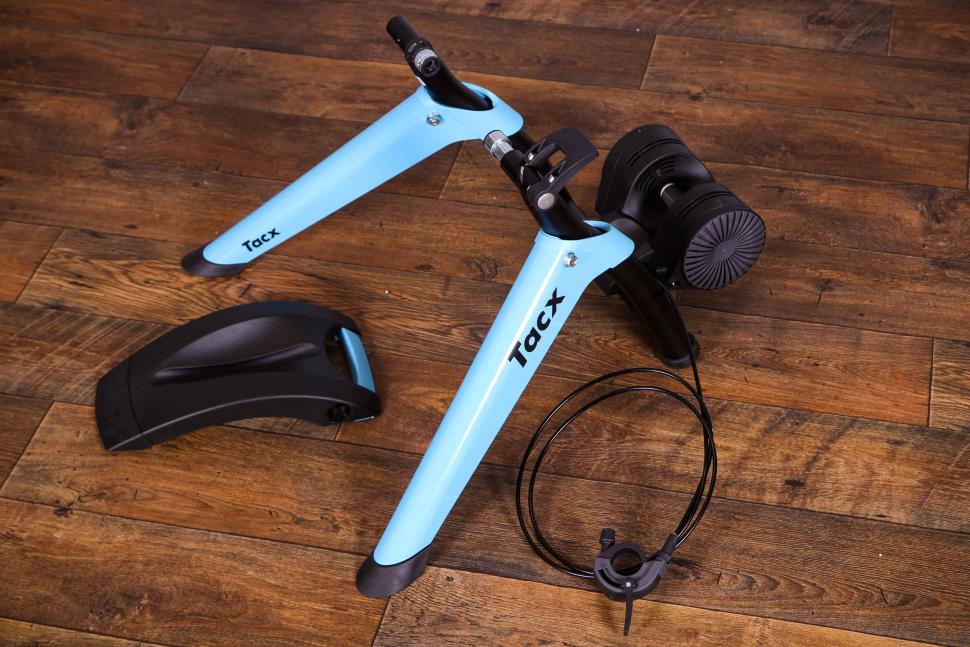
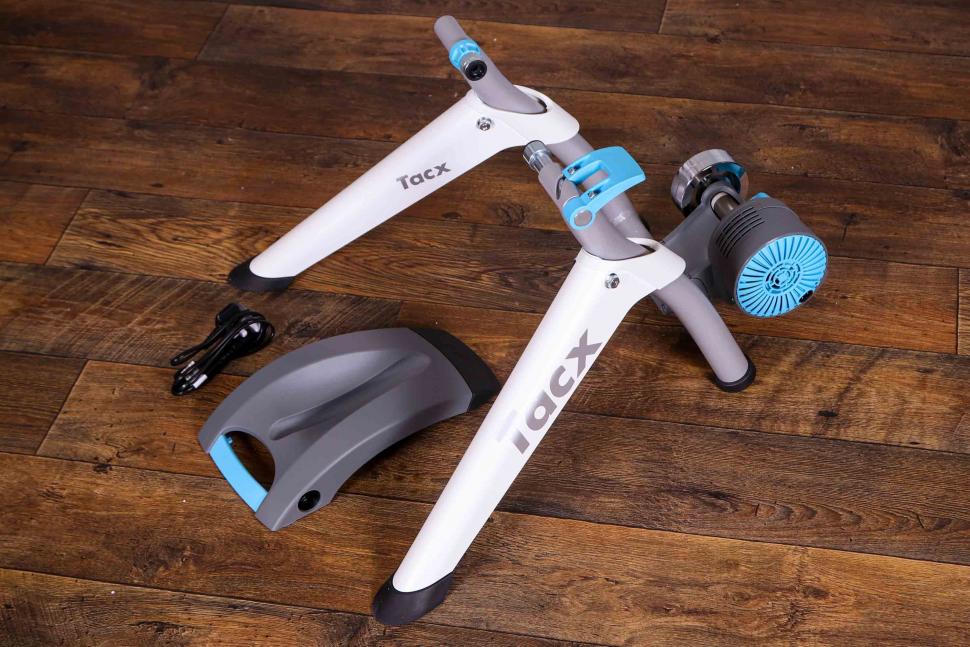
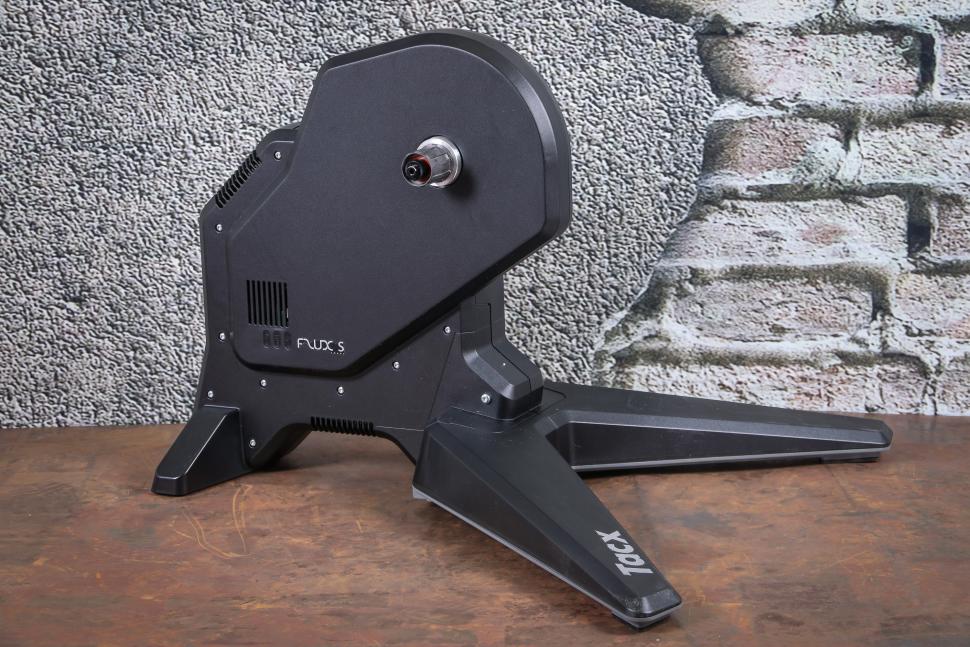

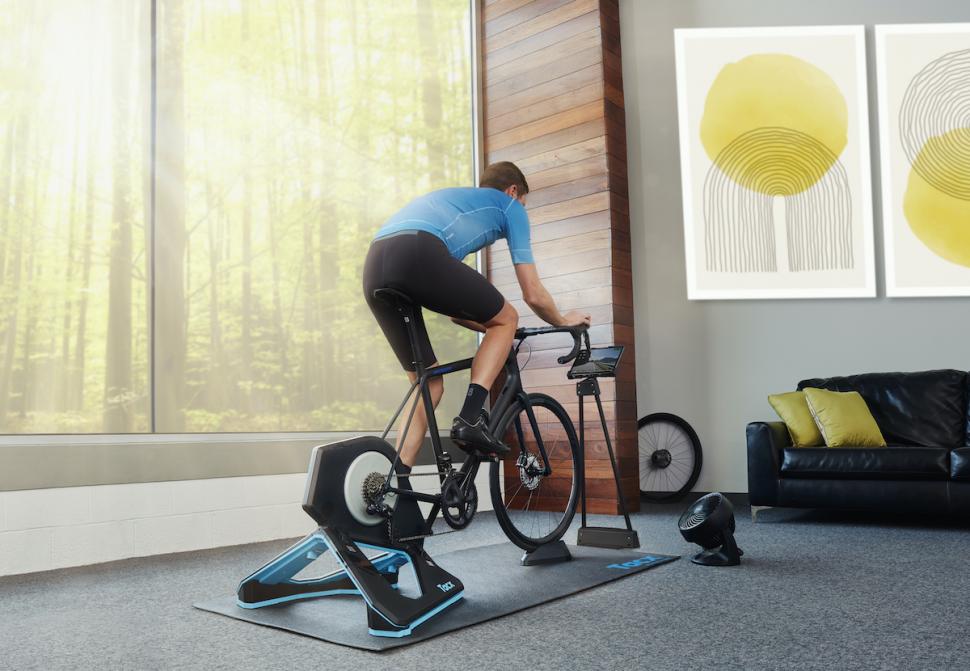
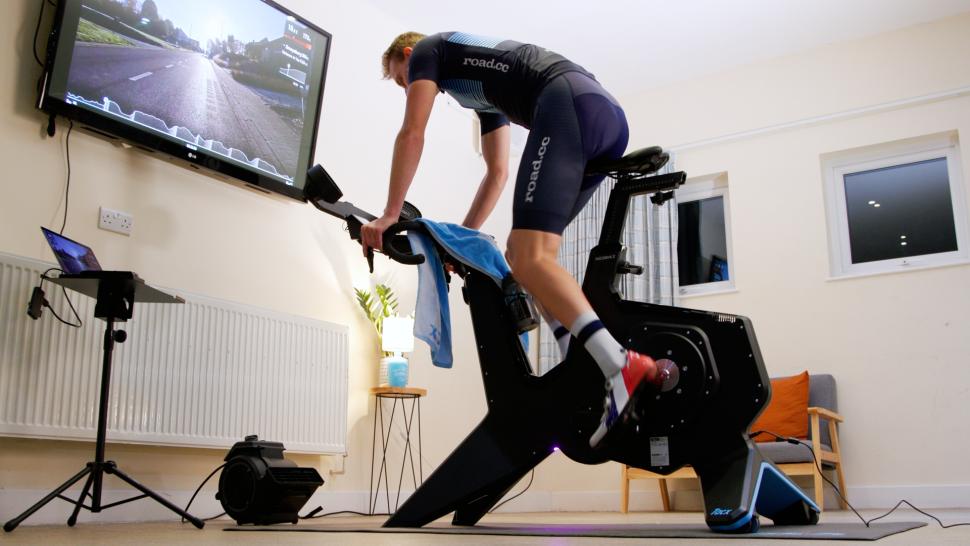
Are you quite mad? They're the sign installation department - not the hedge clipping department. Where would we be if every Tom, Dick, and Harry...
Or letting it be pirated so ChatGPT and their ilk can learn how to replace you…
Directly, as in a vehicle tax, no, but indirectly, health benefits etc. (not just to themselves but the reduction in local pollution to communities...
The Guardian do a nice line in Venn Diagrams.
Feels a bit unfair to refer to the entire B2B cycle path when this only affects the 1/3 of the route closest to Bristol (bandit country); only...
Seems to somewhat miss that there's not a simple rain/not rain binary, though, both in terms that all rain is not equal, and that it can be both...
I imagine if cycling became a protected charistic they'd find some other out group....
Don't know if you fitted the bars yourself Dave. They are poorly finished internally . Outer cables kept jamming internally. Slots and holes poorly...
What's another 6 points when you already have hundreds?